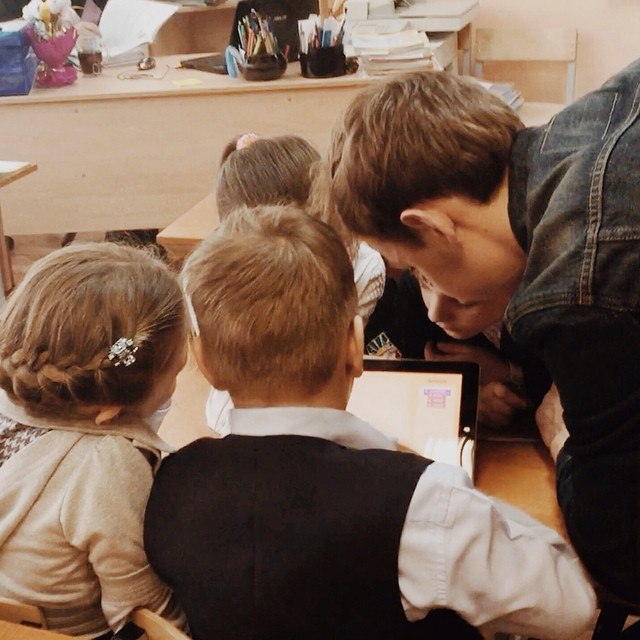7 ideas about child user-testing
Recently, we have managed to conduct several tests, both group and single. User tests can be surprisingly useful, present valuable insights and tell about your application something that you yourself didn’t even guess. Today we want to share our experience of testing games among children - we replaced the computer science lesson. 

- Be part of the pack. One of the main tasks that must be performed before conducting a successful test is to create an environment in which the “subjects” would not feel like experimental rabbits. In the case of children, the way you look in their eyes plays a decisive role (we stood out in contrast with a strict teacher). There is a lot to learn from animators who spend their children's holidays. It is necessary to wake up the inner child, paying more attention to details: hair and clothes, intonations and gestures (you can try the mirroring method), words and general energy. But, as in any situation, the main thing is not to overdo it (we are still doing serious things).
- Attract attention. The beginning of the lesson, perhaps, was the most difficult. It seemed unrealistic for children to shout down and calm down. And then our lovely girl designer remembered one trick - she said as loudly as possible: “Who hears me, clap time”. It worked: the children at their desks turned around and obediently slapped. “Who hears me, clap two” - clap clap. “Who hears me, clap three” - bingo, the children sat quietly and focused on the screen. The rest of the team and the teacher were quietly surprised by this street magic.
- Play Game elements, as it became clear, work very effectively, but from the very phrase “Now let's play” the eyes begin to glow. If you need to somehow prepare the guys for testing, it is worth making it as fun as possible.
- Let them rule the ball. We, the authors of the game, who played the prototype, were already 100 times more difficult to watch as children begin to learn how to navigate the application. We held on as best we could, in order not to fly up and not begin to point out: where to press and where not. Of course, we read a lot about Lean methodology and learned that users will not work with the product in the way you intended, but it was a real challenge to face it. The main ones in testing are children, they should know what to do with games.
- Understand what you want to know. To conduct the test as productively as possible, the next time we will make a list of questions that we want to find the answer. At the same time, it is important not to become attached only to him, and look at both: the best ideas come unexpectedly.
- Do not ask direct questions. Most likely, the children would never answer you honestly, whether they like your application or not (they were all glad to play on the iPad, instead of the usual lesson). Questions like “How would you describe this game to your friend?” Or “What would you add if you were a developer?” Can provide much more useful information.
- Children are different. Naturally, we noticed a very large difference in the speed of mastering and passing the levels of the game, and it is extremely interesting to watch. There was a boy who passed all the levels faster than we did the first time, there were also those who at the last level still could not remember the commands and what they were doing. Now the main task - taking into account the behavior of both groups, to find the very "middle ground".
The lesson went according to plan (even though we were afraid of disaster). As a result, we got a voluminous list of edits to the interface. Thank you for your attention and see you soon)
')
Source: https://habr.com/ru/post/291064/
All Articles